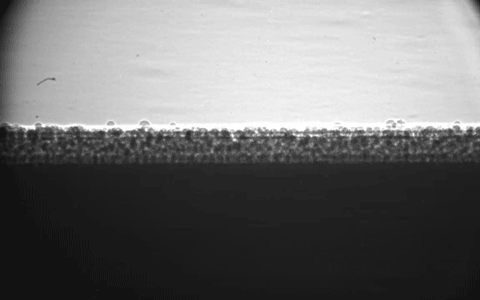From a history-making quartet of lightbulbs powered by nuclear energy to discoveries enabled by the one of brightest light sources in the Western Hemisphere to insights into the dark corners of the universe, 75 years of Argonne research have produced breakthroughs that have changed our society and made our lives safer, healthier and more prosperous. This article is part of a 75th anniversary series describing Argonne’s history of discovery, current science program and future research thrusts.
The U.S. Department of Energy’s (DOE) Argonne National Laboratory continues to significantly invest in developing innovative, scalable manufacturing processes and moving basic science innovations out to the marketplace. To do this, researchers are leveraging Argonne’s “Swiss Army knife” of user facilities for their experiments, as well as the laboratory’s Materials Engineering Research Facility (MERF). Since its debut in 2012, the MERF has worked with nearly 60 industrial partners, 10 DOE national laboratories and 18 academic institutions. At the MERF, Argonne researchers can produce kilogram quantities of experimental materials, like battery electrolytes and water purification membranes, that can then be distributed for industrial evaluation and prototyping. The recent expansion completed in September 2020 will enable further material, chemical and manufacturing scale-up exploration, as well as growth in new areas including printed electronics.
Access to the Argonne Leadership Computing Facility enables integrating artificial intelligence into process development. Researchers also leverage the Advanced Photon Source for real-time measurements and analyses of new materials and technologies. One such technology is electrospinning, a nanofiber fabrication method that may lead to improved water and air filtration, fuel cell electrodes, lithium battery electrolytes and N95 masks.
Argonne’s present momentum in this research space has been building since the turn of the millennium. In 2002, Argonne engineers invented an ultrananocrystalline diamond (UNCD) film, the world’s smoothest and hardest diamond film at only 5 nanometers thick. This work with films continued in 2007, with Argonne researchers seeking to perfect atomic layer deposition, a thin-film growth technique for coating complex, 3D objects with precisely fitted layers. The UNCD work has led to new developments in medicine, particularly for artificial retinas, as well as for particle accelerator components.
Argonne has been active in the 3D- printing space as well, improving the quality of 3D printing through a study at the APS in 2018, improving the recycling of nuclear waste with 3D-printed parts in 2019 and eliminating tiny bubbles in 3D-printed materials in 2020.
